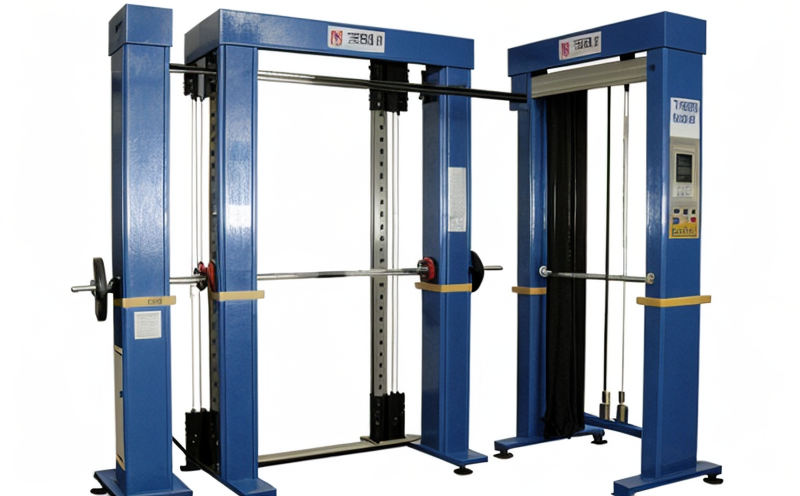ASTM D5035 Breaking force and elongation of textile fabrics Strip method
The ASTM D5035 standard specifies a method for determining the breaking force and elongation at break for woven fabric strips using a tensile testing machine. This method is particularly useful in the textile industry, where understanding material performance under stress is critical.
This test evaluates how a textile specimen behaves when subjected to increasing mechanical load until it fails. The primary parameters measured are the breaking force (in Newtons) and the elongation at break (as a percentage). These values help manufacturers and quality managers make informed decisions about fabric selection, design optimization, and ensuring product compliance with industry standards.
The ASTM D5035 method is widely used in sectors such as automotive textiles, medical textiles, industrial fabrics, and sports equipment. The test strip is typically cut to a specific width (usually 2 inches or 51 mm) and length, depending on the fabric type and end-use application. The specimen is then clamped at each end into the grips of a tensile testing machine.
The testing process involves applying a controlled rate of extension until the sample fails due to tearing or breaking. This method allows for precise measurement of both force and elongation, providing valuable insights into the material's strength properties. The test results are reported as average values from multiple samples to ensure reliability.
Preparation of specimens is critical in ASTM D5035 testing. Fabric strips must be cut accurately according to specified dimensions and orientation (machine or cross-grain). It is also important to ensure that the fabric's edges are smooth and free from fraying, as even small irregularities can affect test results.
The tensile testing machine used for ASTM D5035 should meet the requirements of ISO 6892-1:2014 (formerly known as ASTM E8M). The machine must have a capacity suitable for the expected breaking load and be equipped with appropriate grips to securely hold the fabric strips.
Acceptance criteria typically specify acceptable ranges for both breaking force and elongation at break. These limits can vary depending on the intended use of the textile product, but they often align with industry standards such as ISO 13934-2:2015. Compliance with these standards ensures that fabric specimens meet minimum performance requirements.
- Machine precision
- Specimen preparation accuracy
- Tensile testing machine capacity
- Grip type and alignment
The results of ASTM D5035 tests provide essential data for quality control processes, material selection, product development, and ensuring compliance with relevant specifications. By understanding the breaking force and elongation characteristics of textiles, manufacturers can optimize their products to meet specific performance demands while maintaining cost-effectiveness.
Industry Applications
The ASTM D5035 method finds extensive use across various sectors within the textile industry, including automotive textiles, medical textiles, industrial fabrics, and sports equipment. Automotive manufacturers rely on this test to assess the durability of seat covers, headliners, and other components subjected to repetitive stress during vehicle operation.
In the medical field, ASTM D5035 is crucial for evaluating the strength of surgical drapes, wound dressings, and other healthcare textiles that must withstand repeated sterilization cycles without compromising integrity. Similarly, industrial fabrics used in construction or mining require high tensile strength to endure harsh environmental conditions, making ASTM D5035 testing vital.
For sports equipment manufacturers, understanding the breaking force and elongation properties of fabrics is essential for designing protective gear like helmets, padding systems, and athletic apparel. These tests ensure that materials used in such applications can provide adequate protection while maintaining flexibility and comfort.
The data obtained from ASTM D5035 testing plays a significant role in research and development efforts aimed at improving fabric performance. By continuously refining test methods and interpreting results accurately, textile manufacturers can innovate more robust products tailored to meet evolving market needs.
Customer Impact and Satisfaction
The results of ASTM D5035 testing significantly impact customer satisfaction in several ways:
Enhanced Product Quality: Accurate breaking force and elongation data ensure that textile products meet or exceed industry standards, leading to higher quality.
Improved Durability: By selecting fabrics with appropriate mechanical properties, manufacturers can produce longer-lasting products that better serve their customers' needs.
Better Compliance: Compliance with relevant specifications enhances brand reputation and trust among consumers.
Innovation Opportunities: Understanding material performance enables companies to innovate new designs and applications for textiles, creating products that are both functional and appealing.
Customers benefit from these improvements through better-performing products that last longer and meet their expectations. This ultimately leads to increased customer satisfaction and loyalty.
Environmental and Sustainability Contributions
The ASTM D5035 method contributes positively to environmental sustainability by promoting the use of durable, high-performance textiles. By ensuring that fabrics are strong enough to withstand repeated use without degradation, this test encourages the production of long-lasting products. This reduces waste generation and extends the lifecycle of materials, thereby minimizing resource consumption.
Furthermore, ASTM D5035 testing supports sustainability by helping manufacturers optimize their processes through precise material selection. When textiles meet stringent breaking force and elongation requirements, they are less likely to fail prematurely, leading to reduced replacement rates and lower environmental impact.
The method also plays a role in promoting recycling efforts within the textile industry. By producing durable fabrics that perform well over extended periods, companies can encourage more sustainable practices such as reusing or repurposing materials rather than discarding them after short use.





